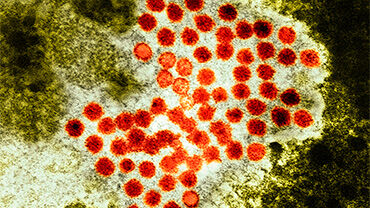Rapid risk assessment: Multi-country outbreak of hepatitis A virus genotype IA infections affecting EU countries in 2018
After the EPIS FWD notification of a cluster of hepatitis A cases infected with two distinct strains in several EU/EEA countries, this risk assessment presents the early findings of this multi-country hepatitis A outbreak and sets out initial options for response.
Executive Summary
In 2018, a total of 42 hepatitis A cases has so far been reported by six European Union (EU) countries; cases are infected with one of two distinct hepatitis A virus (HAV) genotype IA strains. The cases were classified as either autochthonous, i.e. infected in the EU, or as travel related, i.e. with a travel history to Morocco.
Both HAV strains have historically been found to be epidemiologically associated with Morocco. However, many of the 2018 cases do not have a travel history to Morocco.
Cases were identified through sequencing of a viral RNA fragment in the overlapping region VP1/P2A. HAV strains with 1–2 nucleotide differences in this RNA region are likely to be associated with a common origin. Based on recent and historical molecular findings in returning travellers from Morocco and in a resident in Morocco, it is most likely that these strains have been circulating in Morocco since at least 2011, and that transmission in Morocco has been ongoing until very recently.
The two outbreak strains described in this document are not related to the strains associated with the 2016– 2018 outbreak in the EU that is disproportionally affecting men who have sex with men (MSM) [1] or with the strains implicated in two food-borne outbreaks in EU countries in 2012–2014, which were associated with consumption of frozen strawberries and frozen mixed berries [2,3].
Although the source of infection is unknown, EU autochthonous cases are likely to have been infected through food-borne or person-to-person transmission. The relative homogeneity of the viral strains associated with the outbreak cases suggests that food-borne transmission could be associated with a single food product that is distributed in several EU countries. Epidemiological investigations are currently ongoing in some of the affected EU countries to test several hypotheses.
Considering that the source of the outbreak has not been definitively identified, there is a risk of further cases as part of this outbreak. Raising awareness among clinicians about the need for early detection and reporting is likely to help ongoing epidemiological investigations as well as reduce the risk of secondary transmission.








